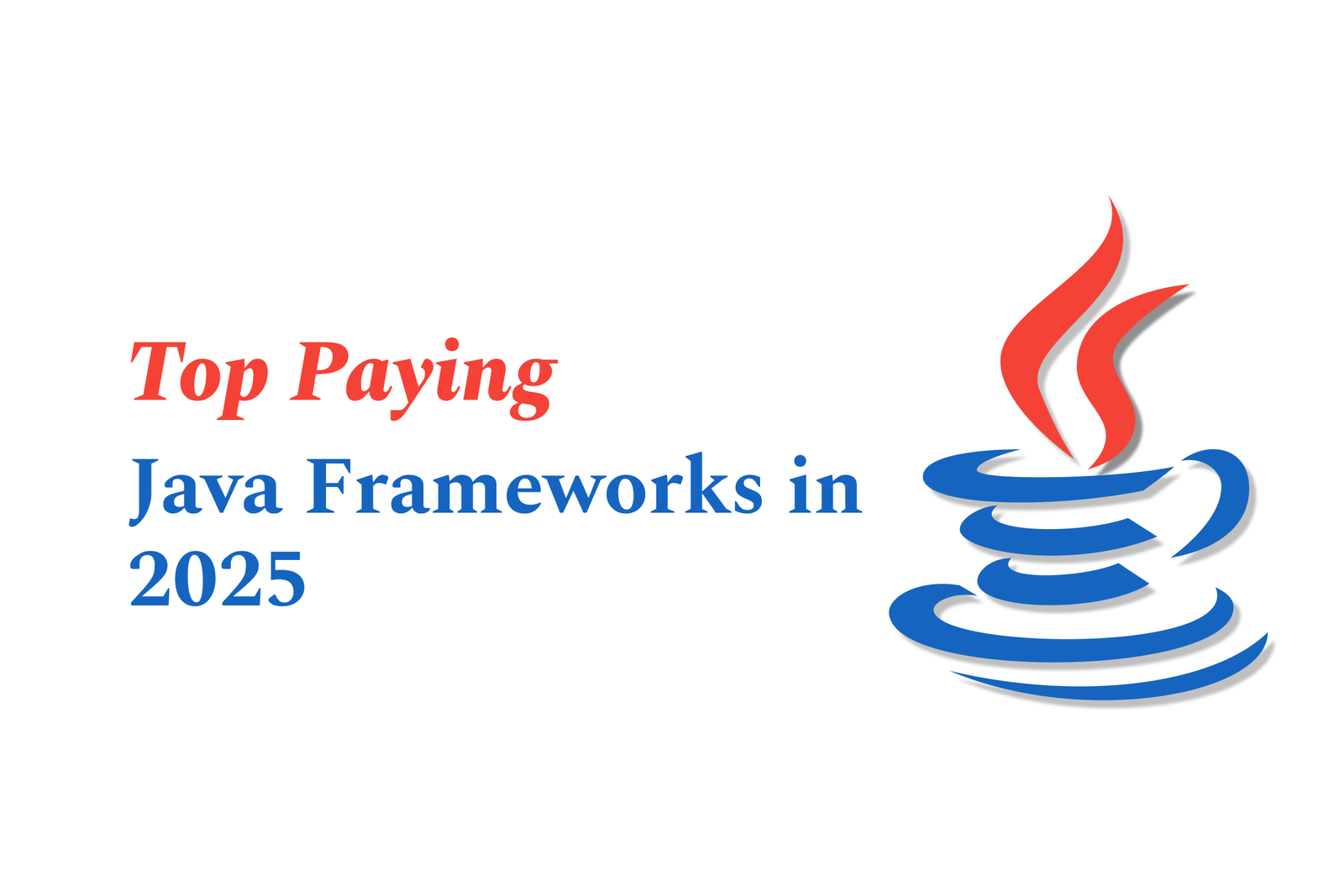Top Paying Java Frameworks In 2025
Top paying Java frameworks in 2025, like Spring, Hibernate, and Struts, streamline development by providing robust tools for web, enterprise, and database applications. Mastering these frameworks boosts efficiency, job prospects, and salary potential in the competitive Java ecosystem.
Top Paying Java Frameworks in 2025
1 ) Introduction to Java Frameworks
Java frameworks are essential collections of pre written code that provide a standardized structure for building Java applications. They simplify development by offering reusable components, libraries, and best practices. These frameworks cater to various application types such as web, database, network, and enterprise solutions. Using Java frameworks accelerates development by reducing boilerplate coding and improving maintainability, making them valuable skills for developers aiming for lucrative careers.
2 ) Why Learn Java Frameworks?
Java developers earn an average salary exceeding $130K, according to statistics, making expertise in Java frameworks not only beneficial for skill enhancement but also for career and financial growth. Mastery of these frameworks boosts efficiency and opens doors to better job opportunities in 2025’s competitive technology landscape.
3 ) Overview of Java Framework Types
Java frameworks come in different categories to address specific development needs:
Web application frameworks
Database operation frameworks
Network services frameworks
Enterprise level solution frameworks
Each framework provides built in functionalities such as database connectivity, data handling, and web services, tailored to streamline the development process for those specific areas.
4 ) Top Java Frameworks to Watch in 2025
While the detailed list of the 20 best Java frameworks is extensive, some prominent frameworks widely recognized include:
Spring Framework: Known for its comprehensive programming and configuration model for modern Java based enterprise applications.
Hibernate: An object relational mapping tool for database operations, simplifying data handling and manipulation.
Struts: A framework for creating enterprise ready Java web applications with MVC architecture.
JavaServer Faces (JSF): For building component based user interfaces for web applications.
Grails and Play Framework: Favored for rapid web application development leveraging conventions and asynchronous processing.
These frameworks collectively dominate many high paying Java development roles.
5 ) Conclusion
For Java developers aiming to maximize their earning potential in 2025, gaining proficiency in top Java frameworks is essential. These frameworks not only enhance productivity and code quality but also improve employability and salary prospects in a competitive job market. Whether building web apps, enterprise solutions, or managing databases, the right Java framework knowledge makes a significant difference.
https://justacademy.in/news-detail/ios-19-battery-usage-apis:-monitor-your-app-efficiently
https://justacademy.in/news-detail/trends-in-cross-platform-development-2025
https://justacademy.in/news-detail/react-native?s-new-gesture-apis:-what-you-can-build-now
https://justacademy.in/news-detail/apple?s-new-app-privacy-report:-developer-guide
https://justacademy.in/news-detail/best-flutter-payment-plugins-in-2025
Related Posts
In 2025, top Angular libraries offer modern, feature-rich components and tools for building dynamic web apps. From powerful data grids to low-code platforms like UI Bakery, these libraries enhance development speed, UI design, and scalability, making them essential for Angular developers.
Migrating from AngularJS to Angular 17 involves gradually upgrading your app by running both frameworks together using tools like ngUpgrade, rewriting components in TypeScript, and adopting Angular’s modern architecture to enhance performance, maintainability, and long-term support.
Angular state management tools help organize and handle app data efficiently, improving scalability and maintainability. Popular options include NgRx for robust, RxJS-based patterns, and newer Signal Store solutions that offer simpler, reactive approaches integrated tightly with Angular’s latest features.
RxJS in Angular empowers developers to manage asynchronous data streams with powerful operators like `forkJoin`, `combineLatest`, and `zip`. Mastering these key operators in 2025 is essential for building efficient, reactive applications that handle complex event sequences seamlessly.
Angular performance optimization in 2025 focuses on improving app speed and responsiveness by using techniques like OnPush change detection, lazy loading, efficient data caching, and AOT compilation. These practices reduce load times, enhance user experience, and ensure scalable, fast Angular applications.
In 2025, Angular remains preferred for large-scale, enterprise apps with its robust, all-in-one framework, while Vue attracts developers seeking simplicity and fast development for smaller projects. Both frameworks excel, with choice driven by project needs and team expertise.
Angular Signals are a new reactive primitive in Angular 16 that enable fine-grained, efficient change detection by automatically tracking dependencies and updating only affected parts of the UI. They simplify state management and boost app performance, revolutionizing Angular's reactivity model.
Angular interview questions to prepare in 2025 focus on core concepts like components, directives, data binding, routing, and dependency injection, along with TypeScript mastery and latest Angular features to ensure strong practical knowledge for building scalable, efficient web applications.
AngularJS reached its official end of support in January 2022, meaning no further updates or security patches. To ensure app security and performance, developers should consider migrating to modern Angular versions or seek third-party long-term support options if immediate migration isn’t possible.
The Angular Roadmap 2025 highlights upcoming features focused on improving developer experience and performance, including zoneless Angular, Signals integration, enhanced Forms, async data handling, improved HMR, and expanded Angular Material/CDK enhancements, driving modern, efficient web app development.










